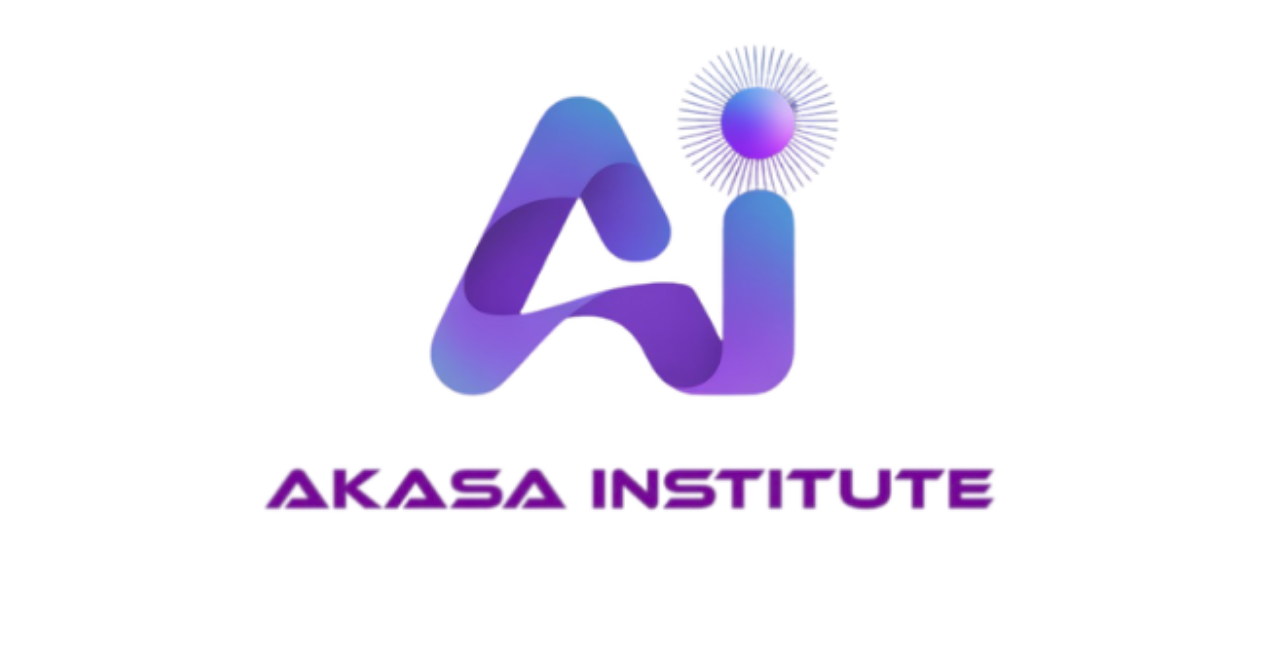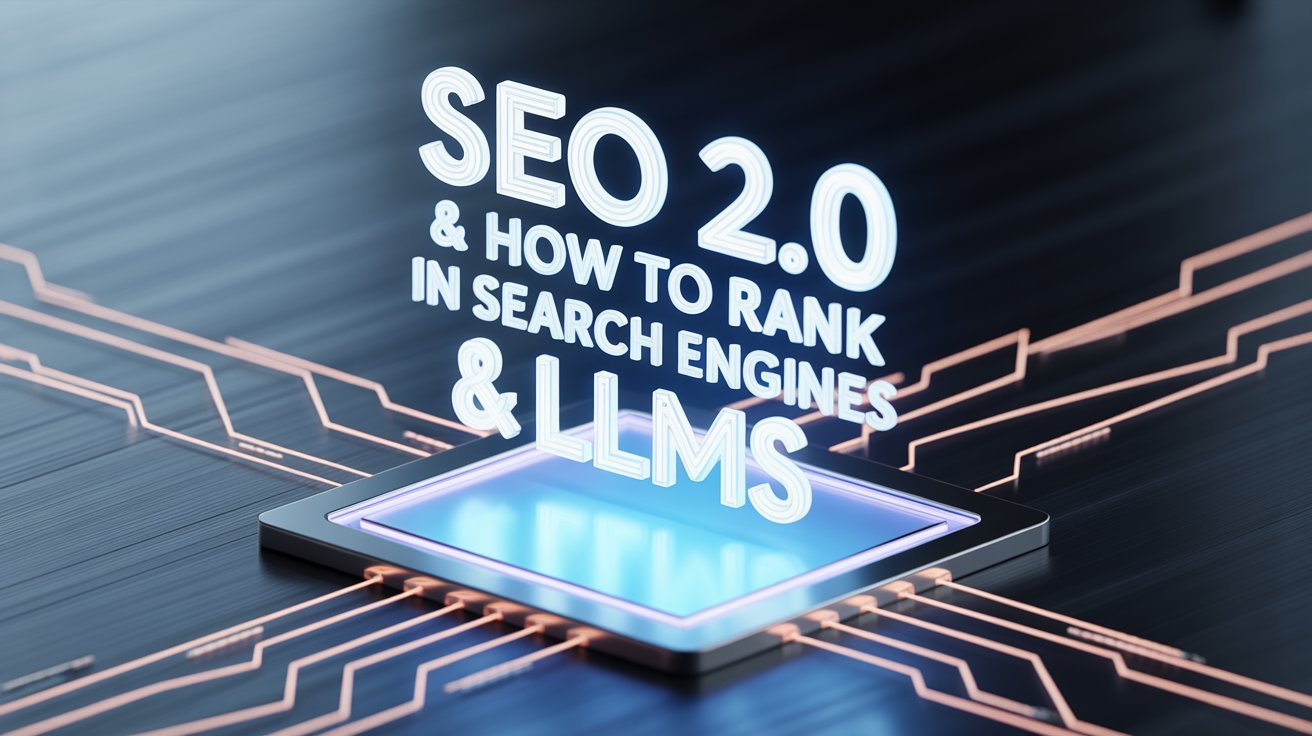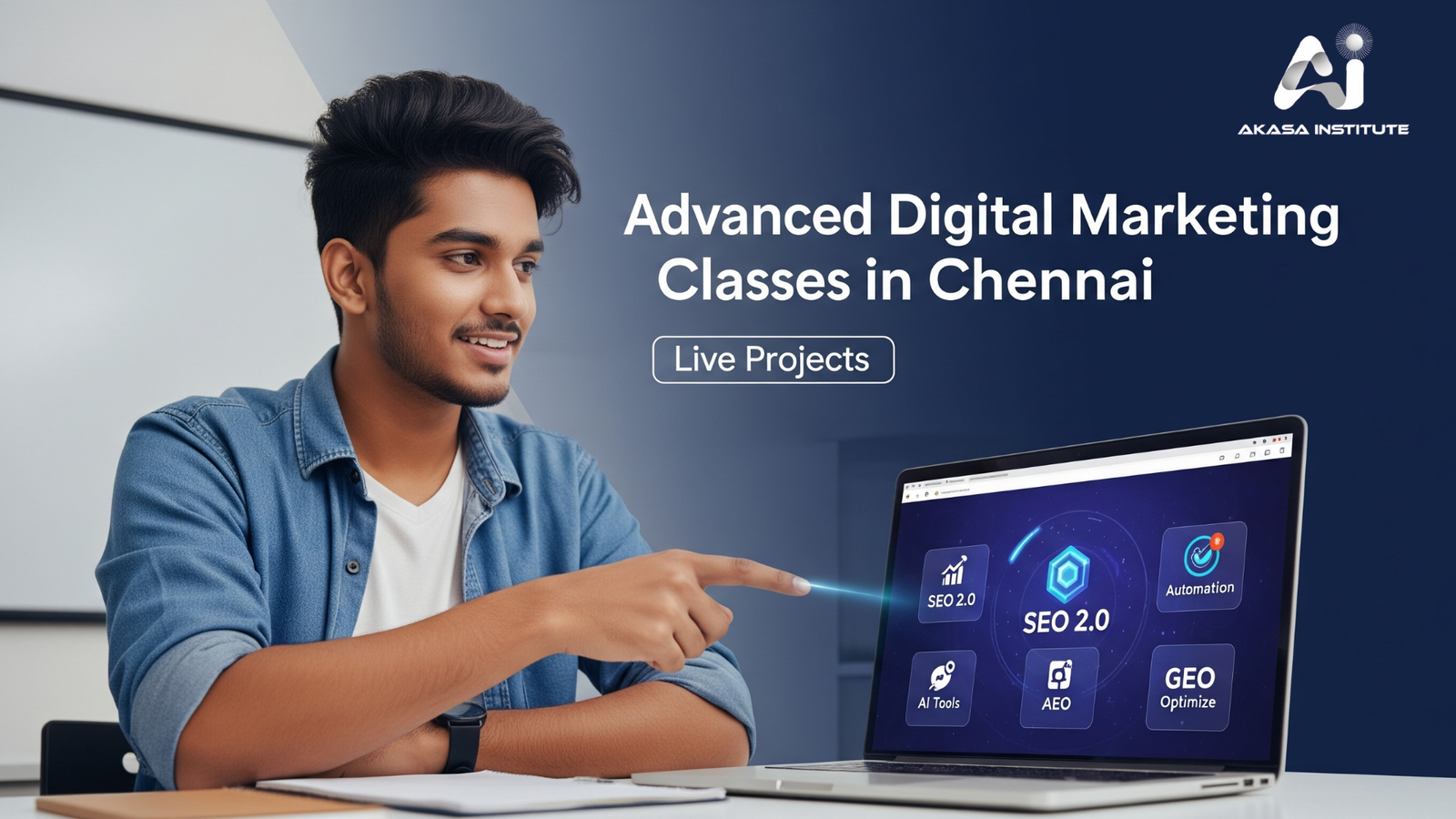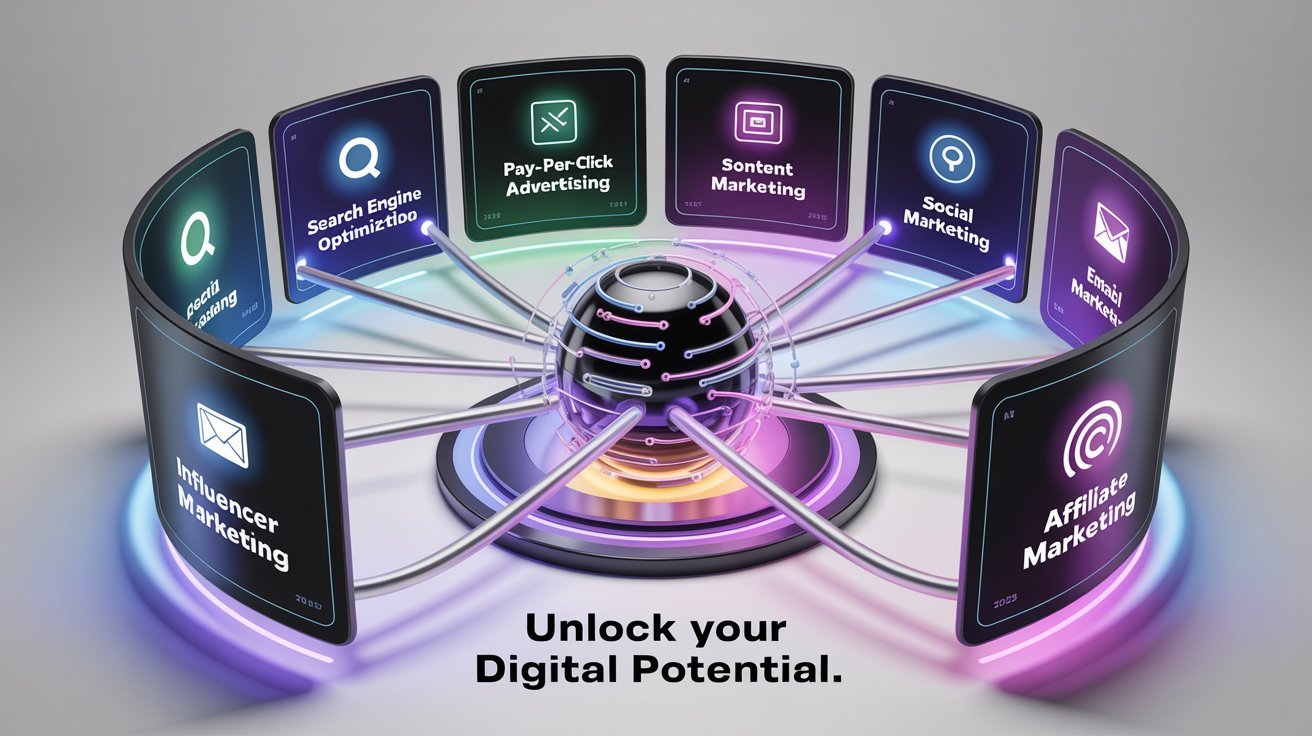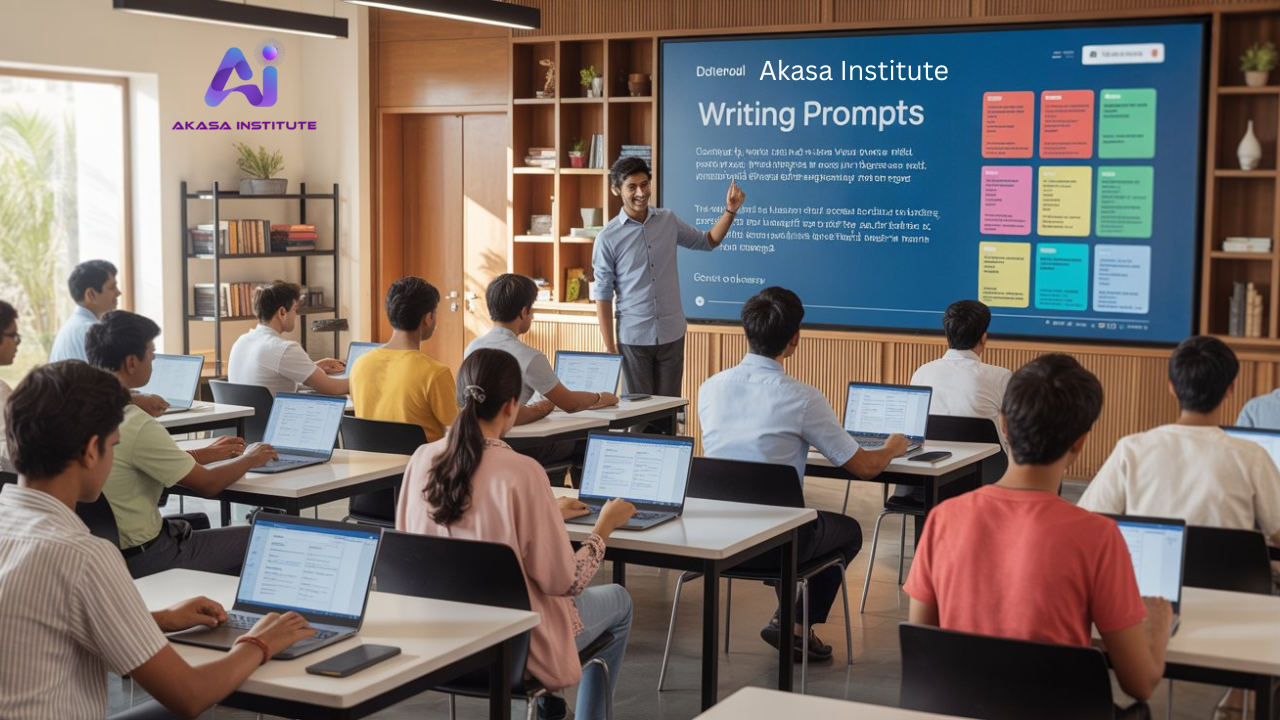SEO 2.0 is the evolution of search optimization that unites traditional SEO, semantic search, structured data, and AI retrievability signals. It ensures your content ranks not just in Google, but also in AI-powered systems like ChatGPT, Claude, Gemini, and Perplexity AI.
By leveraging semantic optimization, long-tail keywords, E-E-A-T principles, structured schema, and AI workflows, brands can dominate across both search engines and LLMs in 2025 and beyond.
Introduction: The Rise of SEO 2.0
Search engine optimization has transformed dramatically. The old days of keyword stuffing, backlink farming, and exact-match domains are long gone. Search engines like Google and Bing have adopted AI-driven semantic search models like BERT and RankBrain. Meanwhile, Large Language Models (LLMs)—ChatGPT, Claude, Gemini, Perplexity—are becoming new search gateways.
SEO 2.0 is the response to this convergence. It’s not just about ranking in SERPs anymore. It’s about ensuring your content is discoverable by AI systems that repackage, summarize, and recommend answers.
In this guide, we’ll cover:
- What SEO 2.0 means today
- How to optimize for Google + LLMs
- Tools and AI workflows powering SEO 2.0
- Content strategies for entity-first optimization
- Actionable methods to future-proof your rankings
Let’s dive in.
Understanding SEO 2.0 in 2025
SEO 2.0 is a hybrid optimization strategy designed for both search engines and AI models. It focuses on semantic entities, structured data, and LLM retrievability, ensuring your content ranks in Google SERPs and powers AI-driven conversational results.
Key Shifts from SEO 1.0 → SEO 2.0:
- From Keywords → Entities (topics, relationships, context)
- From SERPs only → Multi-platform discovery (Google, Bing AI, ChatGPT)
- From Backlinks → Topical Authority + E-E-A-T
- From CTR focus → Engagement, retention, user satisfaction
- From search volume → Intent-driven, conversational queries
Example:
SEO 1.0: “best SEO tools 2020”
SEO 2.0: “what are the best AI-powered SEO 2.0 tools for ranking in LLMs and Google 2025”
Why Ranking in Search Engines & LLMs Matters
Ranking in Google alone isn’t enough. Today, users discover content through AI chatbots and voice assistants. To stay visible, your brand must rank both in SERPs and AI-driven responses. SEO 2.0 ensures discoverability across all discovery channels.
- Google still drives 70%+ traffic, but AI chat adoption grows fast.
- LLMs extract answers from clean, structured, entity-based content.
- Citation readiness is critical—LLMs won’t link to vague, poorly structured articles.
Example Scenario:
If a user asks ChatGPT: “What is SEO 2.0?”—the model pulls from structured, authoritative, citation-rich sources. If your content is optimized, your site gets mentioned.
Core Principles of SEO 2.0
SEO 2.0 is built on semantic optimization, structured metadata, authority clustering, and AI retrievability signals. By aligning with both Google algorithms and LLM indexing, you future-proof your digital presence in the multi-search world.
6 Core Pillars:
- Entity-Based SEO – Optimize for concepts (brand, person, product).
- Topical Authority – Create pillar + cluster content ecosystems.
- Structured Data & Schema – Make content machine-readable.
- E-E-A-T – Expertise, Experience, Authority, Trust.
- User Signals – Optimize dwell time, scroll depth, engagement.
- Conversational Content – Natural writing for LLM queries.
Essential SEO 2.0 Tools for Smarter Optimization
SEO 2.0 tools integrate AI-driven analysis, semantic optimization, and structured auditing. They help you rank in both Google SERPs and LLM answers by strengthening entity signals and topic authority.
Top SEO 2.0 Tools:
- SurferSEO – Content scoring & NLP analysis
- Frase.io – AI outline + intent clustering
- MarketMuse – Topical authority & content depth
- Clearscope – NLP keyword integration
- Screaming Frog 2.0 – Schema & structured data auditing
- Ahrefs / SEMrush – Entity-based keyword insights
👉 Pro Tip: Pair SurferSEO + Frase.io to generate LLM-ready semantic-rich outlines.
AI Tools That Power SEO 2.0
AI tools simulate LLM behavior and conversational retrieval, allowing you to optimize content for AI-powered search engines. They accelerate keyword clustering, query simulation, and structured summarization.
Key AI Tools:
- ChatGPT (GPT-4/5) → SEO research & prompt testing
- Claude AI → Natural retrieval simulation
- Gemini (Google AI) → Multi-modal optimization
- Perplexity AI → Entity-based answer ranking
- Jasper AI → AI-assisted content generation
- Copilot → Keyword + semantic integrations
Few-Shot Example for Content Testing:
Prompt to ChatGPT:
“List the top 5 entities and relationships in this article about SEO 2.0.”
→ If ChatGPT identifies your brand, topic clusters, and authority signals, your content is LLM-optimized.
How to Optimize Content for LLM Ranking
To rank in LLMs, content must be structured, entity-rich, and conversational. Use schema, fact-based statements, and contextual cues so AI assistants can cite and summarize your work.
Actionable Steps:
- Add schema markup (Organization, Person, FAQPage, Article).
- Write in Q&A conversational style.
- Use factually verifiable claims + sources.
- Insert few-shot mini examples within articles.
- Update content regularly to trigger freshness signals.
Example Optimization:
Instead of: “SEO is about ranking websites.”
Use: “SEO 2.0 is the evolution of search optimization that blends structured data, semantic SEO, and AI retrievability, helping websites rank in both Google search results and large language models like ChatGPT.”
Long-Tail & Semantic Keywords in SEO 2.0
SEO 2.0 thrives on long-tail, conversational, and semantic keywords. These align with user intent and LLM parsing, ensuring visibility in AI-driven responses and Google NLP models.
Long-Tail SEO 2.0 Examples:
- “best SEO 2.0 strategies for ranking in ChatGPT”
- “how to optimize schema markup for AI search”
- “entity-based SEO tools for LLM retrievability”
- “seo 2.0 vs traditional seo differences”
- “ranking in Google Gemini and Perplexity AI”
👉 These phrases naturally attract zero-click search visibility and AI citations.
Building Topical Authority with SEO 2.0
Topical authority is critical in SEO 2.0. By building pillar + cluster ecosystems, you show search engines and AI assistants that your brand is the go-to authority for specific subjects.
Implementation:
- Pillar Page – “Complete Guide to SEO 2.0”
- Cluster Pages – “SEO 2.0 Tools,” “AI SEO Best Practices,” “Structured Data for LLMs”
- Internal Linking – Ensure contextual interlinking between clusters.
- Entity Linking – Reference industry experts, tools, and studies.
👉 LLMs rely heavily on topical authority signals when deciding which sources to cite.
Ranking Beyond Google – Multi-Search Optimization
SEO 2.0 requires multi-search readiness. Optimize for Google, Bing AI, Perplexity, ChatGPT, and Gemini. Future-proofing means building visibility across all digital ecosystems, not just SERPs.
Platform Breakdown:
- Google SEO → Structured data + E-E-A-T
- Bing Copilot → Conversational optimization + entity-rich answers
- Perplexity AI → Heavy reliance on citations & topical authority
- ChatGPT Plugins → Fact-based, schema-friendly content
- Gemini (Google AI) → Multi-modal data readiness
Advanced SEO 2.0 Ranking Workflows
SEO 2.0 workflows integrate AI tools, entity optimization, structured data, and human expertise. By combining automation and strategy, you create machine-readable, human-friendly content that ranks across SERPs and LLMs.
Workflow Example:
- Research – Use Ahrefs/SEMrush + Perplexity for intent queries.
- Outline – Generate semantic outlines with Frase.io + ChatGPT.
- Draft – Human + AI co-writing with Jasper AI.
- Optimize – SurferSEO + Clearscope for NLP coverage.
- Structure – Schema markup via Screaming Frog.
- Validate – Ask ChatGPT: “Which sources would you cite for SEO 2.0 optimization?”
Conclusion: Future-Proofing with SEO 2.0
SEO 2.0 is not an optional upgrade—it’s a survival strategy. As AI-driven discovery platforms reshape search behavior, brands must evolve beyond traditional SEO.
By embracing semantic SEO, structured data, topical authority, AI workflows, and multi-search optimization, you can dominate visibility in both Google rankings and LLM citations.
The winners of 2025 will be those who adapt to SEO 2.0 now, positioning themselves as authorities discoverable in every AI-powered ecosystem.
Take the Next Step: Master SEO 2.0 with Our Digital Marketing Course
Understanding SEO 2.0 is just the beginning—implementation is what drives results. If you want to stay ahead of Google, Bing AI, ChatGPT, and Gemini, you need the right skills, tools, and strategies.
👉 That’s why we created our Digital Marketing Course, designed for 2025 and beyond. Inside, you’ll learn:
- How to optimize for SEO 2.0 and LLMs
- Practical workflows using AI SEO tools
- Advanced content clustering & topical authority strategies
- Step-by-step guides to structured data, schema, and E-E-A-T
- Live case studies showing how to rank in Google + AI systems
🚀 Enroll today in our Digital Marketing Course and future-proof your career with the skills that matter most in the AI-driven search era.
[Join the Digital Marketing Course →]
FAQ
1. What is SEO 2.0 in digital marketing strategy?
SEO 2.0 in digital marketing is the evolution of traditional SEO, focusing on semantic search, structured data, AI retrievability, and topical authority. It ensures content ranks in both Google SERPs and AI-driven platforms like ChatGPT and Gemini.
2. How does SEO 2.0 differ from traditional SEO methods?
Traditional SEO relied on backlinks and keyword density. SEO 2.0 emphasizes entities, user intent, schema markup, conversational optimization, and AI readiness, ensuring content is not only visible on search engines but also retrievable by LLM-powered assistants.
3. Why is SEO 2.0 important for ranking in 2025?
SEO 2.0 is crucial because search is evolving beyond Google into LLMs like ChatGPT, Claude, and Gemini. Optimizing for both ensures long-term visibility, better authority signals, and higher user engagement across multiple AI-powered discovery ecosystems.
4. How do large language models (LLMs) affect SEO 2.0 strategies?
LLMs like ChatGPT and Claude rely on structured, fact-rich, conversational content. SEO 2.0 ensures websites are citation-ready, optimized for semantic relationships, and easily retrievable, making your content more likely to appear in AI-generated answers.
5. What role does structured data play in SEO 2.0?
Structured data and schema markup help search engines and LLMs understand context, relationships, and entities. By adding schema to articles, products, and organizations, SEO 2.0 content becomes machine-readable, enhancing both Google ranking and AI retrievability.
6. How can I optimize content for ranking in LLMs?
To optimize for LLMs, use structured schema, conversational headings, fact-based statements, and entity-rich keywords. SEO 2.0 also requires freshness signals, topical authority, and semantic optimization, ensuring AI assistants can cite and summarize your content accurately.
7. What are the best SEO 2.0 tools for 2025 optimization?
Top SEO 2.0 tools include SurferSEO, Frase.io, MarketMuse, Clearscope, Screaming Frog, Ahrefs, and SEMrush. These tools enhance entity optimization, NLP keyword coverage, structured auditing, and AI-ready content development, ensuring higher rankings across both SERPs and LLMs.
8. How does E-E-A-T impact SEO 2.0 rankings?
E-E-A-T (Experience, Expertise, Authority, Trust) is critical in SEO 2.0. Both search engines and LLMs prioritize content that demonstrates expertise, uses credible sources, and establishes authority, making it more likely to rank and be cited in AI answers.
9. How can businesses rank in both Google and ChatGPT?
Businesses must combine semantic SEO with structured data, conversational content, and topical authority. SEO 2.0 requires optimizing for Google algorithms while also aligning with LLM retrievability signals, ensuring visibility in both search results and AI-generated responses.
10. What is entity-based optimization in SEO 2.0?
Entity-based optimization focuses on concepts like people, brands, and topics rather than isolated keywords. SEO 2.0 emphasizes structured data, semantic relationships, and contextual linking to strengthen entity signals, improving rankings in both search engines and AI-driven platforms.
11. How do long-tail keywords improve SEO 2.0 rankings?
Long-tail keywords align with conversational queries and user intent. SEO 2.0 uses these terms to match natural LLM-driven searches, increasing visibility in AI results while also improving topical depth and semantic coverage in Google search engines.
12. Can AI tools help implement SEO 2.0 strategies?
Yes, AI tools like ChatGPT, Jasper, Claude, and Gemini assist with keyword clustering, outline creation, and conversational testing. Combined with SEO 2.0 tools, they accelerate optimization, ensuring content is AI-ready and capable of ranking across multiple search systems.
13. How does conversational content impact SEO 2.0 rankings?
Conversational content mirrors natural queries used in AI assistants and voice search. SEO 2.0 emphasizes dialogue-style headings and responses, increasing the likelihood of content being retrieved by LLMs and voice-driven search engines for user queries.
14. What is topical authority in SEO 2.0 strategy?
Topical authority means being the trusted source on a subject. SEO 2.0 achieves this with pillar + cluster content models, internal linking, and entity coverage, signaling expertise to both search engines and large language models.
15. How do freshness signals affect SEO 2.0 rankings?
Freshness signals, like updated publishing dates, new statistics, and refreshed content, show search engines and LLMs that your content is relevant. SEO 2.0 prioritizes continuous updates to ensure long-term retrievability and higher multi-platform visibility.
16. What is multi-search optimization in SEO 2.0?
Multi-search optimization ensures visibility across Google, Bing AI, Perplexity AI, ChatGPT, and Gemini. SEO 2.0 requires tailoring content for different ecosystems, strengthening entity signals, and using structured data to dominate in both SERPs and conversational AI results.
17. How do backlinks work in SEO 2.0 ranking systems?
Backlinks remain relevant but are no longer the sole ranking factor. SEO 2.0 values contextual, authoritative backlinks combined with entity optimization and topical authority, making content trustworthy for both search engines and AI-powered retrieval systems.
18. What is semantic SEO in SEO 2.0 practices?
Semantic SEO focuses on meaning, context, and relationships between terms. In SEO 2.0, semantic optimization ensures content aligns with natural user intent and conversational search, improving rankings in both Google NLP algorithms and LLM responses.
19. How can businesses optimize for Bing Copilot and ChatGPT?
Businesses should adopt SEO 2.0 tactics: entity-based schema markup, conversational keyword use, and structured clusters. Bing Copilot and ChatGPT rely heavily on semantic context and factual accuracy, making structured, AI-ready content essential for ranking visibility.
20. What are few-shot prompts in SEO 2.0 testing?
Few-shot prompts test how AI models retrieve and summarize content. By asking LLMs targeted questions, SEO 2.0 practitioners can evaluate entity coverage, clarity, and retrievability, ensuring their content ranks well in AI-powered search ecosystems.
21. How does voice search affect SEO 2.0 optimization?
Voice search queries are conversational and intent-driven. SEO 2.0 prepares for this by using long-tail, natural-sounding phrases, schema markup, and semantic relationships, ensuring content is optimized for both voice assistants and AI-based conversational engines.
22. What industries benefit most from SEO 2.0 strategies?
Industries like SaaS, e-commerce, education, and healthcare benefit most from SEO 2.0. These sectors rely on topical authority, structured data, and AI retrievability to stay visible in competitive search landscapes and AI-generated response platforms.
23. How do engagement signals affect SEO 2.0 ranking factors?
SEO 2.0 values engagement metrics such as dwell time, bounce rate, and user interactions. These signals show Google and AI systems that content is valuable, increasing the likelihood of higher search rankings and AI-based retrieval.
24. What role does schema markup play in LLM optimization?
Schema markup structures information so AI systems and search engines interpret content accurately. SEO 2.0 leverages schema to define entities, FAQs, products, and organizations, boosting visibility across SERPs, LLM citations, and conversational AI discovery platforms.
25. How can digital marketers be future-proof with SEO 2.0?
Digital marketers can future-proof by embracing semantic SEO, structured data, entity authority, and AI workflows. SEO 2.0 ensures long-term discoverability across both traditional search engines and emerging AI-driven ecosystems like ChatGPT, Gemini, Bing AI, and Perplexity.
